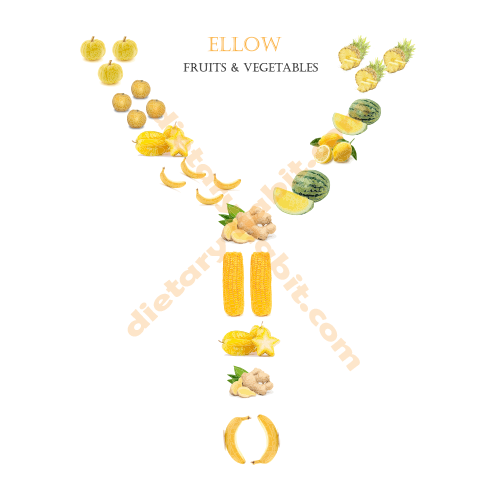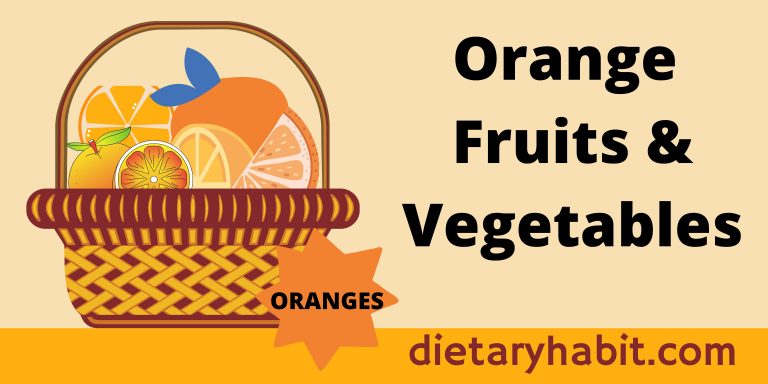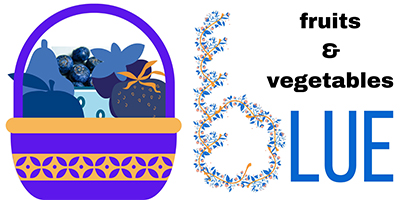Exotic Yellow Fruits and Vegetables with Finest Health Prospects

Yellow is the symbol of youthful life, and it represents cheerfulness. The vibrant color can revitalize your lost energetic souls. What about giving yellow color fruits and vegetables a try! Their lively and lovely appearance on the diet can enhance your physical and mental health. Several studies suggest that yellow fruits and vegetables are jam-packed with essential nutrients vital in maintaining our body’s internal environment. Excluding such an impressive nutrition profile means you’re missing out on a chance to enhance overall immunity.
Eating a rainbow diet has been trendy these days. Combining red, green, blue, orange fruits and vegetables on your table can dig up the best health prospects for you. Adding pink fruits can reduce your monotony. Yellow fruits and vegetables come in some varieties worldwide. Some yellow fruits are tropical but can be found worldwide through globalized transportation systems.
When fruits are ripe, many of them adopt a yellow hue. The matured color indicates the accumulation of some specific phytonutrients. The phytochemicals may boost the taste of fruits and vegetables. At the same time, ripe yellow fruits and vegetables show strong character in preventing diseases.
Let’s learn about the finest yellow fruits and vegetables with an excellent nutrition profile.
Nutrition Profile Of Yellow Fruits And Vegetables
Yellow fruits and yellow vegetables are abundant in the market. It’s easy to add yellow food to your diet. You should strongly consider them as yellow fruits and vegetables contain extraordinary antioxidant and anti-inflammatory effects. The phytochemicals give them the gorgeous yellow hue. Some of the significant phytochemicals found in yellow-colored fruits and vegetables are as below.
- Carotenoids (alpha carotene, beta carotene)
- Zeaxanthin
- Lutein
- Lycopene
- Beta-cryptoxanthin
- Bioflavonoids
- Potassium
- Zinc
- Phosphorus
- Magnesium
- Vitamins B
- Vitamin C
- Folic acid
Yellow fruits and vegetables contain plenty of vitamins, minerals, color pigments, etc. Vitamin A, Vitamin B6, folate, Vitamin C, Vitamin E are mostly found. They are illuminated with essential minerals including potassium, copper, manganese, phosphorus, zinc, magnesium, etc. With these combined with pigments like flavonoids, yellow fruits and vegetables are considered one of the most influential rainbow food.
Alpha carotenes, beta carotenes, beta-cryptoxanthin fall in the category of carotene. Lutein, lycopene, zeaxanthin are also carotenoids but fall in the subcategory of xanthophyll. And xanthophyll is the factor to create a yellow hue in fruits and vegetables. They contain oxygen and yellow pigments to blend into a colorful but beneficial hybrid.
Carotenes are the predecessor of vitamin A. They are intriguingly associated with eye health. Yellow fruits and vegetables also contain a large number of bioflavonoids. These polyphenol compounds were previously known as vitamin P. Though they don’t act like vitamins, they have versatile health benefits.
Minerals constitute a significant portion of our body fluids. They maintain the osmolarity and tonicity of blood. Both in ECF and ICF, potassium plays a vital role in maintaining homeostasis.
Health Benefits Of Yellow Fruits And Vegetables
Yellow fruits are capable of both treating your soul and body. The phytochemicals are abundant and densely packed.
Carotenoids are widely regarded as the protector of eye health. Vitamin-A is derived from carotenes. And it prevents night blindness by producing rod cells. However, lutein prevents macular degeneration, which means damage of cells in the retina’s center. Thus it saves you from blurred vision. Lutein and zeaxanthin absorb blue rays and protect you from their chronic effects.
Yellow fruits and vegetables hugely contribute to alleviating your gastrointestinal disorders. Compared to other rainbow foods, they aid in better digestion. Yellow fruits and veggies contain prebiotics, a form of dietary fiber. Prebiotics encourage the normal flora of the intestine to produce nutrients, e.g., short-chain fatty acids to nourish the gut cells. The dietary fibers are more abundant in yellow fruits and hence provide the ultimate protection against troubles in GIT.
Yellow fruits and vegetables also help detoxify the liver by activating cytochrome P450 enzymes. This yellow rainbow food significantly reduces the risks of peptic ulcer and Irritable Bowel Syndrome (IBS). But remember to consult your doctor before you go for any yellow celery as they’re harmful to IBS patients.
Ginger is the epitome of the excellence of yellow fruits and vegetables in maintaining bowel health. According to a study, it lessens the risk of nausea, vomiting, dyspepsia, and even Irritable Bowel Syndrome.
If you’re the person who can’t avoid sweets, I can share an effective method to lessen the impact of glucose. Yellow citrus fruits are genuine as fat cutters. Some researchers suggest that acidic drinks like citrus juice reduce the glycemic index of starch-rich foods by 20-50%. That means your glucose level won’t rise much if you follow this simple trick.
However, yellow citrus fruits are helpful in many other ways. They reduce the risks of gastric and esophageal cancers. To maintain a satisfactory metabolic environment, fibers in yellow fruits and veggies help a lot. Doctors suggest some yellow fruits and vegetables during endoscopy and colonoscopy for proper defecation reflex.
What are the yellow fruits and vegetables
Ginger
Ginger has been an effective weapon for healers from ancient times though it has a pungent taste and odor. It shows remarkable and rapid medicinal properties. The yellow core of this food can help prevent morning sickness, weight loss, osteoarthritis, diabetes, heart diseases, and any chronic indigestion.
Corn
You can find the varieties of corn all over the world, also known as maize sometimes. It’s a staple food in many countries. If you don’t have this on your table, let’s decide again after going through its benefits. Yellow corn is an excellent source of lutein and zeaxanthins. They promote eye health by preventing damages to the eye lens and retina.
Jackfruit
Jackfruit is mainly confined to South and Southeast Asia. But the colonial era helped it spread through the continents. The yellow fruit is covered with a thick rind containing scaly spikes. This spiky fruit is delicious to eat. The succulent and tender flesh surrounding the seeds just melts in the mouth. The sticky inside isn’t a factor towards the love for a jackfruit. You can roast the arils and even eat the seeds.
Squash (acorn, butternut)
Also known as summer squash, this bright-hued yellow vegetable is delicate in texture and sweet in taste. This yellow vegetable is a powerhouse of nutrients packed with Vitamin A, Vitamin B2, Vitamin B6, folate, manganese, potassium, phosphorus, fibers, etc. Aged people with osteoporosis get the most benefits by adding yellow squash to their diet. When it comes to manganese and phosphorus, they are remarkably effective in strengthening your bones and teeth.
Asian Pears
Yellow pears are a good source of vitamins, minerals, and antioxidants. The yellow pear is good for bowel health, circulatory health, eye health, and overall immune system. They are from a pear family, though they look like an apple. The crunchy apple pear tastes sweet. Dietary fibers in yellow pears bind with the lousy cholesterol and extract them out of the body.
Bananas and Plantains
Banana has a yellow cover with a white core. However, banana is one of the most recognized fruits adorned with many benefits. Bananas and plantains contain lots of fibers, potassium, and other minerals. Potassium ensures a healthy heart by dilating the blood vessels and thus reducing blood pressure. If you add bananas to your diet, it’ll boost your overall immunity.
Lemons
Lemons are of the most used fruits all over the world. They offer various health benefits valuable to leading a productive and healthy lifestyle. When you remember a citrus fruit, lemon comes first. Citric acid has effects on metabolic wastes. They have antioxidant and anti-inflammatory properties. Our body produces metabolic wastes that can produce oxidative stress if not regulated. Having a lemon daily can reduce oxidative stress and offer you longer and younger health.
Pineapple
Pineapple is a nutritious fruit with plenty of minerals, vitamins, and antioxidants. It’s a mouth-watering tropical fruit that derives impressive health benefits. Yellow pineapple tastes sweet, but it’s low in calories than other sweet fruits. They contain various macro and microminerals, including manganese which is very important for teeth and bones.
Starfruit or Carambola
If you want variety on your table. Starfruit can be a good option. This sour but juicy fruit is also known as carambola. When you cut it, it gets the shape of a star. And it oozes in the mouth with a sour taste meaning the presence of antioxidants. The larger carambola tastes a bit sweet, though. It contains lots of dietary fibers that can aid your gut health through proper digestion.
Watermelon
Watermelon gives you the sweet mad taste when it melts in the mouth. As a delicious fruit, watermelon exerts powerful effects on cancer protection. It has high water contents that hydrate the body in sheer hot weather. Watermelon juice is proven to relieve muscle soreness and enhance athletic performance.
Orange
Orange is traditional fruit parents tend to feed their children as they’re confident about the fruit’s ability. They’re wholeheartedly right about choosing this exotic yellow food. This vitamin C enriched fruit can be your best bet on the table to improve overall immunity. The delicious yellow fruit enhances your immune system. They also help synthesize collagen, which is effective for mending injuries. Oranges also boost brain functions and prevent diseases.
Pumpkin
The plump yellow fruit has a great nutrition profile. It’s not only a mere Halloween decoration, but this yellow pumpkin also contains plenty of minerals, fibers, vitamins, antioxidants, etc. If you have eye problems related to increasing age, you can benefit from pumpkin cuisine. Potassium in pumpkins can reduce high pressure. A research on mice gives hope for mankind that pumpkin may lower glucose levels in diabetes patients.
Last but not The Least
If you want to utilize the best benefits of these amazing yellow fruits and vegetables, you should regularly eat yellow fruits and vegetables. A habit needs cues, rewards to be established. You can switch between fruits to avoid repetitive eating behavior. Set an aim or be motivated with the tons of benefits of yellow fruits and veggies. Give some time, and you’ll build a healthy habit of eating yellow fruits and vegetables. Give some time to the process, and you’ll harvest the sweet results of eating yellow foods sooner or later.




